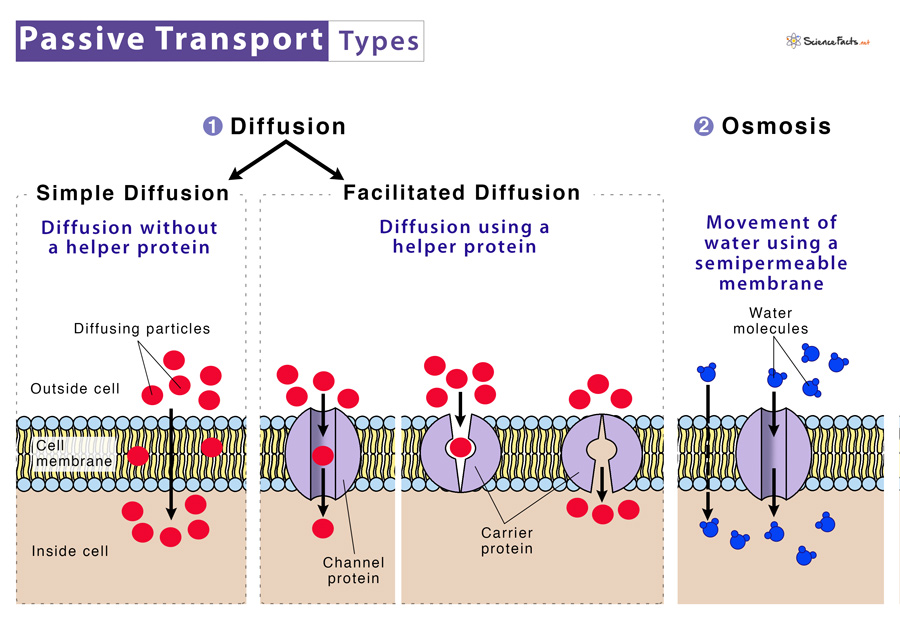Passive Transport
What is Passive Transport
Passive transport is defined as the movement of ions and other atomic or molecular substances from an area of high concentration to an area of low concentration without any energy input.
Why is Passive Transport Important to Cells
The main function of passive transport is to control the entry and exit of substances to and from the cell by means of a selectively permeable membrane. Also, it helps the system to attain a state of equilibrium by equalizing the concentration of substances in both regions.
Types of Passive Transport with Examples
1) Diffusion
It is the movement of substances from an area of high concentration to an area of low concentration until the concentration becomes equal in both regions. The two common types of diffusion are:
a) Simple Diffusion: It occurs without the help of any protein molecule. Examples: The movement of water, oxygen, carbon dioxide, ethanol, and urea.
b) Facilitated Diffusion: It is a selective process that occurs with the help of a transmembrane protein molecule. Facilitated diffusion can occur either through a channel protein or through a carrier protein. Examples: Transport of glucose, sodium ions, and potassium ions.
2) Osmosis
The spontaneous movement of water molecules from a region of low solute concentration to a region of high solute concentration through a semipermeable membrane. It is a selective process that allows only solvent molecules to pass while restricting the solutes. Examples: Taking of nutrients and minerals inside the cell and getting rid of its waste products.
FAQs
Ans. Passive transport does not require energy because it is a spontaneous process that is favorable to nature.
Ans. Passive transport benefits a cell by allowing many essential substances to be transported in and out of the cell membrane without any energy expenditure. For example, oxygen diffuses from the blood directly into cells, which helps them to produce energy.
Ans. The cell membrane controls the movement of substances in and out of the cell by selectively permitting their passage, thus protecting the cell from its surroundings.
-
References
Article was last reviewed on Thursday, February 2, 2023






